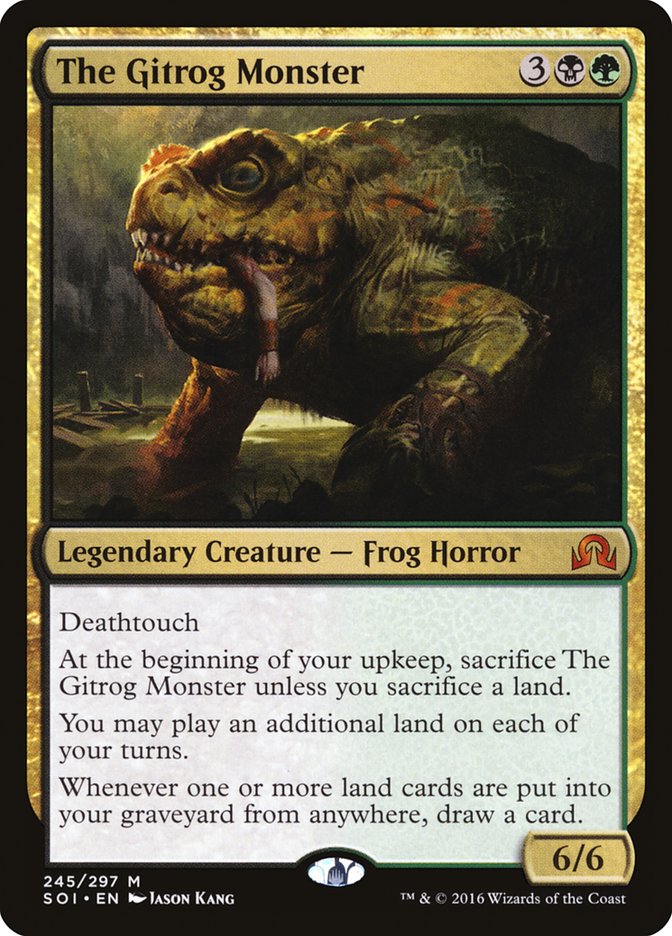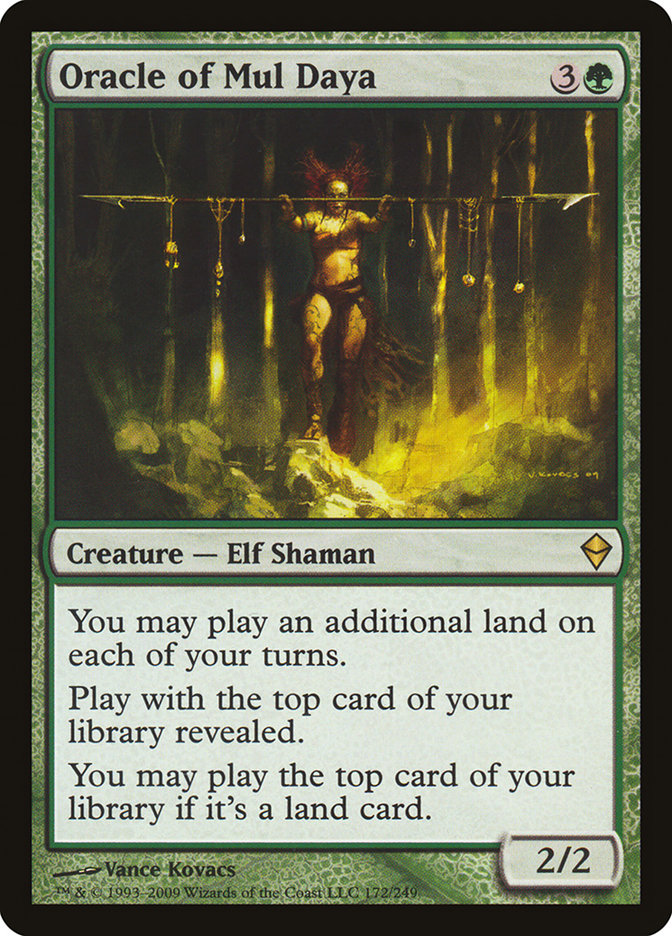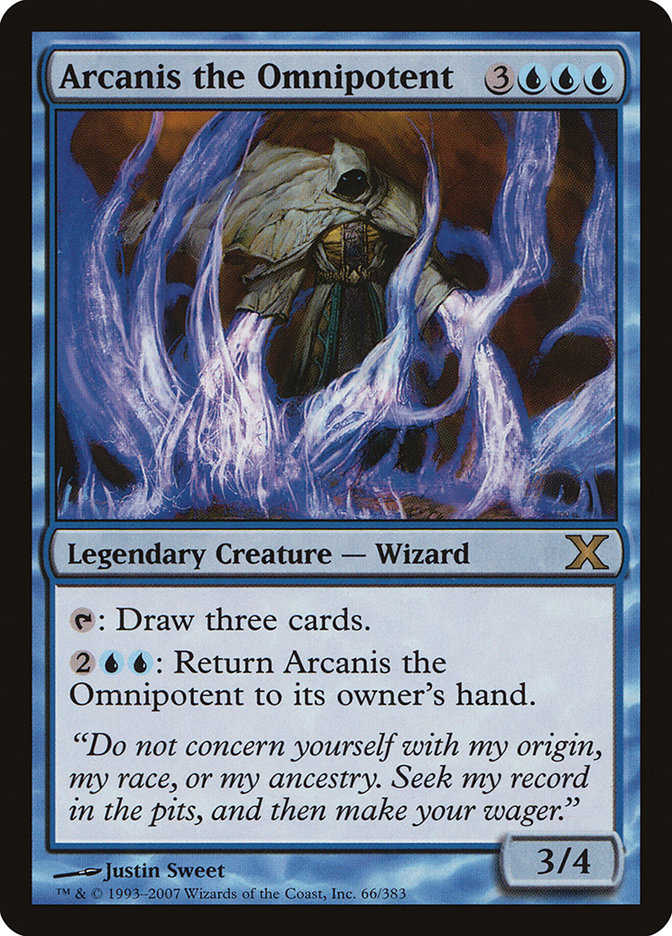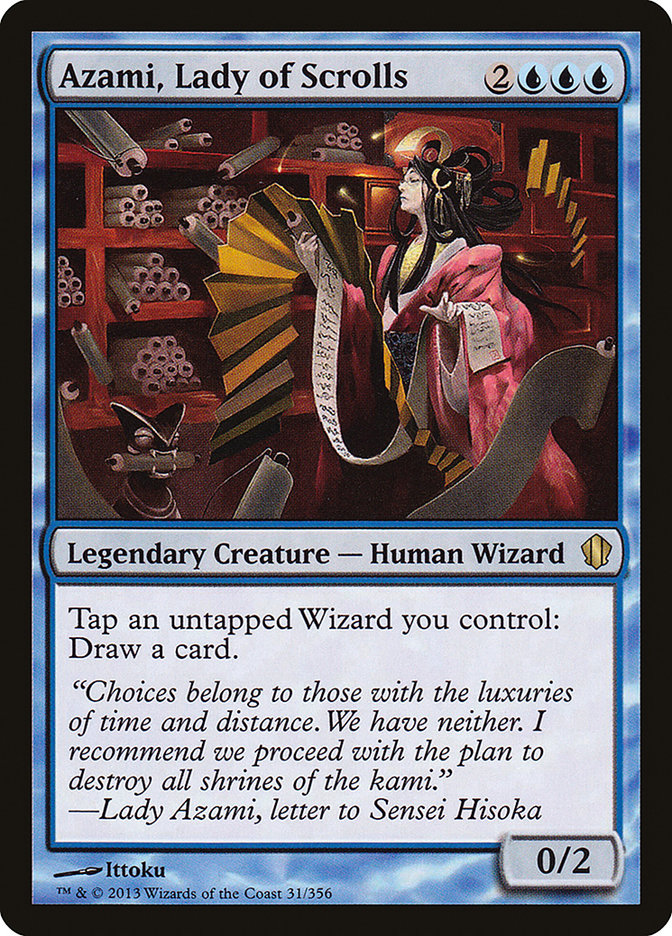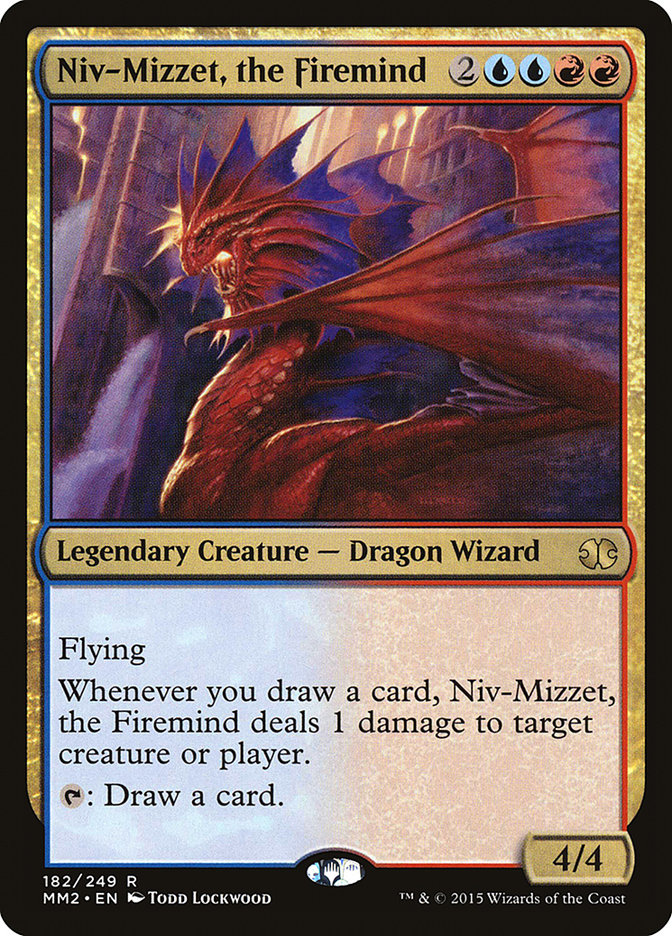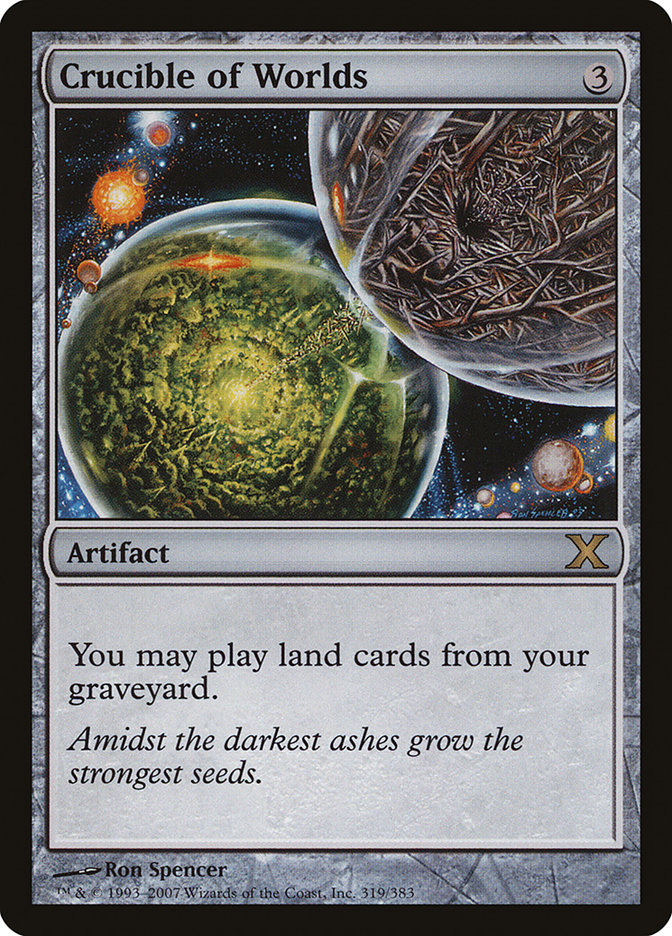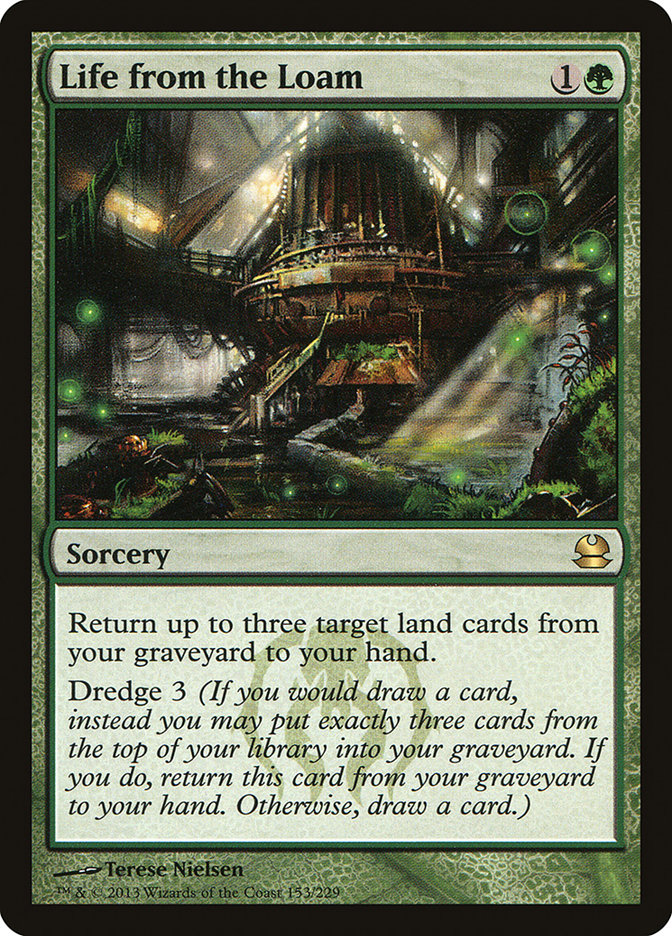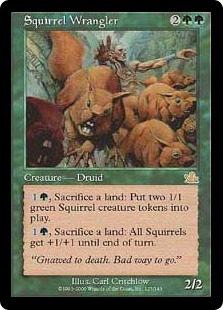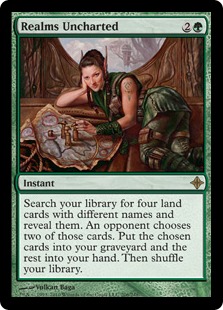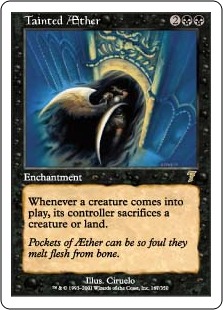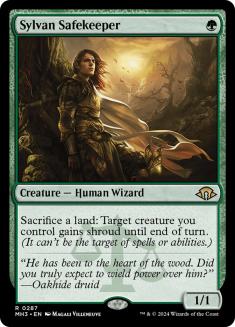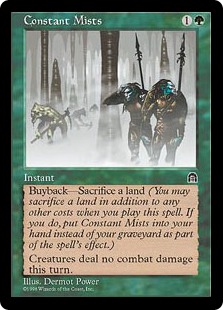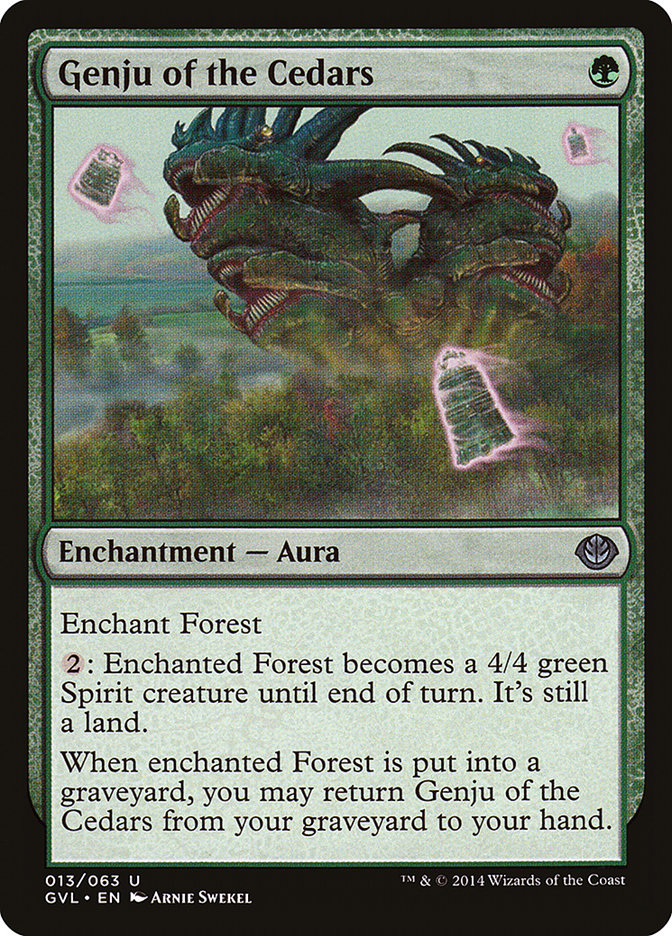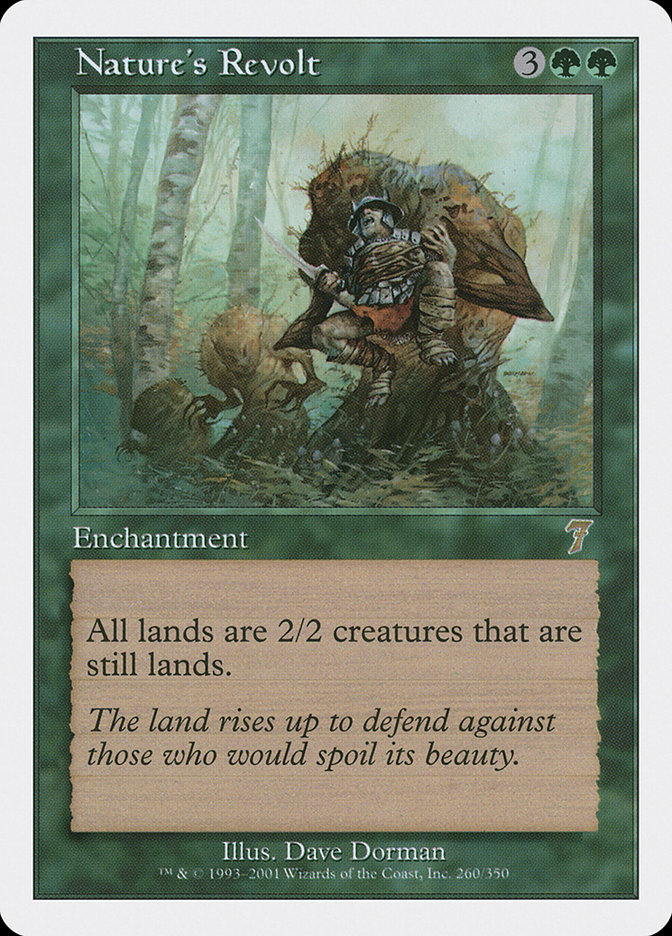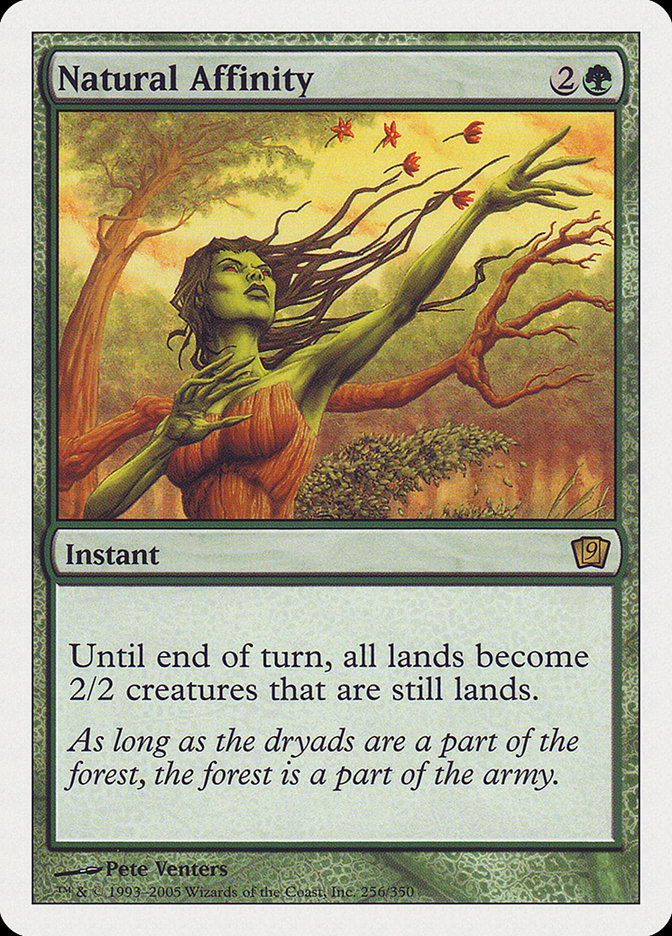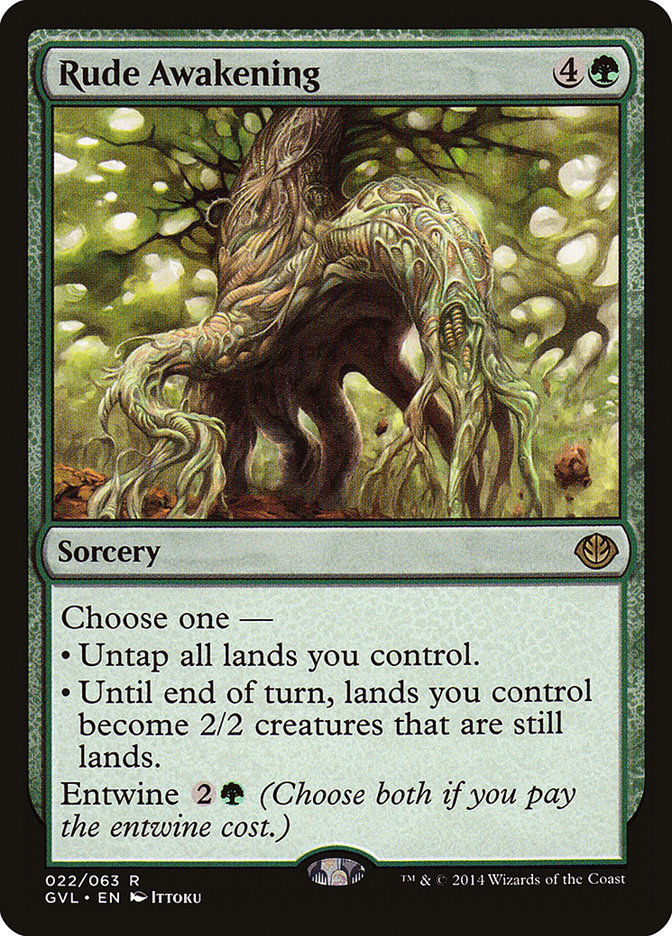Spoiler season is a bit like Christmas for Magic players. The discussion is filled with how cool new cards are, what Magical Christmas Lands we construct when discussing how great the cards are, and, most importantly, brewing season! Several new legends are spoiled. We have a new Archangel Avacyn who flips into Avacyn, the Purifier; a new Sigarda, Heron’s Grace (who is still helping the Humans!); no legendary Werewolf yet; and one legend in particular caught my attention.
Let’s break down The Gitrog Monster, our new froggy overlord. Five mana for a 6/6 is good. Yay efficiency! Deathtouch is… nice? This is a bit like Grave Titan where the deathtouch will just rarely matter. However, a commander having innate deathtouch is a nice boon since it makes a Voltron strategy much more effective with trample. Lethal damage is now just one, so a Rancor-enchanted The Gitrog Monster is now able to trample for seven, bringing our Frog Horror down to just three swings to eliminate a player.
Next up is the need to sacrifice a land or The Gitrog Monster on your upkeep. Losing mana in the land of haymakers can be frustrating, but this big Frog isn’t about to leave you stranded on a lily pad. You can play an extra land every turn. This is like a big combat-ready Oracle of Mul Daya. The reason we run this card? Whenever a land is put into your graveyard from anywhere, you draw a card.
I need to emphasize this card drawing effect. Drawing cards is an extremely effective means of winning a game of Commander; it’s just shy of free spells and cards that say “win the game” on them. The card advantage give options and more resources. A commander that enables a draw engine is very powerful, and something as repeatable as The Gitrog Monster is spectacular. Even with no additional work to leverage the ability, the various fetchlands available would make this effect potent. I always recommend taking a second look at a commander with a card-drawing effect. There is a reason that many highly competitive Commander decks have a commander centered around card advantage.
Booyah! This card is sweet. Efficient cost, ramp capability, card draw engine, and a direction to build around. One things that I value for this card is the deck versatility. You can go all-in with a self-milling deck, just play lands and get value with a slight drawback on the commander, or go deep with a unique draw engine. This leaves a lot of room for creativity in the deck and for players to tune the deck to their specific desires and metagames.
So what are the main things to do? Well one approach would be the mill deck. The dredge mechanic on Dakmor Salvage, Golgari Grave-Troll, and Stinkweed Imp can flip a lot of stuff into the graveyard. From here you keep triggering draws from the lands, which allows you more dredge triggers to keep milling. After milling a huge portion of the deck, casting a huge Living Death or Worm Harvest to get a boatload of creatures can quickly seal the deal on the game. Concordant Crossroads gives the whole table haste, and into the red zone goes your deck! Add Mesmeric Orb to churn through the deck at an astounding rate and you’re good to go. Just be aware of some graveyard hate and start hitting the tables.
This isn’t quite how I would build the deck. I like the draw engine piece, but the all-in nature of the Living Death build doesn’t appeal to me. I much prefer the draw engine with a tiny Voltron-style backup plan. It looks a bit like this:
Creatures (23)
- 1 Sakura-Tribe Elder
- 1 Royal Assassin
- 1 Squirrel Wrangler
- 1 Silklash Spider
- 1 Reiver Demon
- 1 Groundskeeper
- 1 Sylvan Safekeeper
- 1 Gurzigost
- 1 Anurid Scavenger
- 1 Gleancrawler
- 1 Vulturous Zombie
- 1 Loaming Shaman
- 1 Herald of Leshrac
- 1 Riftsweeper
- 1 Lord of Extinction
- 1 Oracle of Mul Daya
- 1 Grave Titan
- 1 Jade Mage
- 1 Courser of Kruphix
- 1 Titania, Protector of Argoth
- 1 Greenwarden of Murasa
- 1 Centaur Vinecrasher
- 1 Stoic Builder
Planeswalkers (1)
Lands (42)
- 1 Strip Mine
- 10 Forest
- 1 Cabal Coffers
- 1 Llanowar Wastes
- 8 Swamp
- 1 Slippery Karst
- 1 Polluted Mire
- 1 Temple of the False God
- 1 Tranquil Thicket
- 1 Barren Moor
- 1 Dust Bowl
- 1 Terminal Moraine
- 1 Petrified Field
- 1 Ghost Quarter
- 1 Terramorphic Expanse
- 1 Urborg, Tomb of Yawgmoth
- 1 Reliquary Tower
- 1 Verdant Catacombs
- 1 Tectonic Edge
- 1 Evolving Wilds
- 1 Command Tower
- 1 Woodland Cemetery
- 1 Myriad Landscape
- 1 Hissing Quagmire
- 1 Warped Landscape
- 1 Drownyard Temple
Spells (30)
- 1 Genju of the Fens
- 1 Genju of the Cedars
- 1 Exploration
- 1 Sol Ring
- 1 Demonic Tutor
- 1 Diabolic Tutor
- 1 Constant Mists
- 1 Crucible of Worlds
- 1 Harrow
- 1 Crop Rotation
- 1 Tainted Aether
- 1 Golgari Signet
- 1 Life from the Loam
- 1 Sudden Spoiling
- 1 Damnation
- 1 Scapeshift
- 1 Worm Harvest
- 1 Maelstrom Pulse
- 1 Grim Discovery
- 1 Nature's Claim
- 1 Realms Uncharted
- 1 Beast Within
- 1 Diabolic Revelation
- 1 Grim Return
- 1 Hero's Downfall
- 1 Restore
- 1 Sudden Reclamation
- 1 Verdant Confluence
- 1 Thought Vessel
- 1 Call the Bloodline

Breakdown
The focus of the deck is to leverage value from The Gitrog Monster. This caused me to up the land count and include a few other cards that give me more access to playing lands, like Exploration, Oracle of Mul Daya, and Courser of Kruphix. This lets me play several lands a turn, which helps make Life from the Loam even more powerful (plus the cycling lands are a sweet interaction with The Gitrog Monster and the dredge mechanic). Crucible of Worlds and Life from the Loam are the MVPs in this deck. I included a handful of tutors to help find them and get the deck up and running. Life from the Loam returns lands from the graveyard and can be dredged by putting the top three cards of my library into the graveyard. I can redraw Life from the Loam, and with the cycling lands, I can bring back two regular lands and a cycling land to ensure that I can draw spells and retrieve Life from the Loam.
Crucible of Worlds does something similar by letting me play my lands straight from the graveyard. Not only is this extremely useful with The Gitrog Monster, I can play cards like Strip Mine to draw more cards while making sure my opponents don’t have access to Cabal Coffers or Gaea’s Cradle for boatloads of mana or a land like Sunhome, Fortress of the Legion or Alchemist’s Refuge for utility. I am not advocating using Strip Mine and Crucible of Worlds with Oracle of Mul Daya and Exploration and The Gitrog Monster to play Strip Mine four times a turn and wreck an opponent’s manabase. It looks cool on paper, but trust me, no one will be impressed by those shenanigans. Impress them with my next section instead.
Impressing People (or Just Not Boring Them)
Other cards help work with The Gitrog Monster and the number of lands you sacrifice. Worm Harvest and Restore need dead lands, while a couple effects sacrifice or get lands into the graveyard for value. A quick rundown of the ones that seem the most fun:
Squirrel Wrangler: make tokens and then make those tokens bigger. Constant source of card draw with The Gitrog Monster out.
Realms Uncharted: get lands. Also works with The Gitrog Monster to draw cards, but finding stuff like Drownyard Temple; Cabal Coffers; Urborg, Tomb of Yawgmoth; and Slippery Karst is going to be excellent.
Tainted Aether: keeps away bad stuff. My LGS players hateto sacrifice their lands, so this just buys time until it is answered. I am completely cool with that, or drawing more cards as I slam a Grave Titan onto the field.
Sylvan Safekeeper: protecting key cards (The Gitrog Monster and Titania, Protector of Argoth) is great. Doing it in response to a removal spell: sacrifice a land. Getting additional value off that sacrificed land and now-countered spell: priceless. For everything else, there’s The Gitrog Monster.
Constant Mists: Fog with buyback. This helps keep me alive, helps draw cards, and is a nifty older card I haven’t played. Seems like the time to take it for a spin.
Getting the lands back on the battlefield is important, like the new Drownyard Temple, which will keep the Frog Horror fed every turn. You would definitely run a G/B commander that had this effect: “3: Draw a card.” This is how Drownyard Temple functionally reads in my deck, plus it’s really great value to sacrifice to pay for Crop Rotation or Harrow. Other effects like Stoic Builder and Groundskeeper keep the mana flowing.
The nifty interactions for me are cards that many people have forgotten. Genju of the Cedars and Genju of the Fens animate lands, which lets me do something with the (hopefully) extra mana I have, and these enchantments recur when the land dies. The critter lands get into the red zone and draw me cards. Then we have a couple of cards from Odyssey block, Gurzigost and Anurid Scavenger, which put cards on the bottom of the deck. This keeps some good beaters around and helps ensure the fetchlands I play always have something to do. You don’t want to be in a Commander game where your Evolving Wilds can’t evolve to a basic land. It’s a sad moment.
I have a “dead lands matter” card in the aforementioned Worm Harvest, but Centaur Vinecrasher is a really cool card from Commander 2015 that hasn’t had a lot of love yet. I want to get that Plant Centaur into combat and, if it dies, recur it even bigger than before. Lord of Extinction is a huge fatty in basically every Commander game so this seems a good fit as I build up my graveyard.
Tokens are handy in my local game store, so I have Call the Bloodline and Jade Mage to help use some early mana to make tokens. I particularly like that the Vampire Knight tokens have lifelink; Call the Bloodline may only be able to be activated once a turn, but if I discard a land, The Gitrog Monster triggers another draw. Cantrip and a token? Sign me up! Squirrel Wrangler fits in here again. Worm Harvest pulls its weight all over the place in this deck by making large numbers of Worms, and the card can be replayed from the graveyard. Discarding a land is normally a bit of a bummer, but The Gitrog Monster turns the retrace cost into a cantrip, and drawing cards is the best mechanic in Magic.
Finally, the deck rounds out with generic ramp (Harrow chosen for The Gitrog Monster) and removal. I tried to get value out of the cards themselves or their versatility. Maelstrom Pulse and Beast Within hit everything and Hero’s Downfall helps with big scary permanents like opposing commanders or planeswalkers. Nature’s Claim is a card I play in almost every single green Commander deck of mine. Greenwarden of Murasa, Loaming Shaman, and Riftsweeper help me keep access to important cards like Crucible of Worlds, Worm Harvest, and Titania, Protector of Argoth. The last card to round out the deck is Garruk, Apex Predator for a couple of reasons. He is my favorite planeswalker (not the best by a long shot, but he is my favorite) who enables a lot of jokes about hunting the most dangerous game (planeswalker) while making tokens, removing creatures, and having an ultimate that pretty much says “target player loses the game,” which is a great package for the mid- to late-game.
The final card to talk about is Titania, Protector of Argoth, the deck’s lieutenant. I have not made a deck with a second legendary creature carrying such weight in a deck before, so this seemed the opportune deck. Titania, Protector of Argoth brings back a land on her enters-the-battlefield trigger, and when a land dies she makes a 5/3 token, not a 1/1 or 2/2 that can easily be chumped. These tokens demand to be dealt with and trade up with loads of creature cards in combat (yeah, three toughness is rough, but I’m focusing on the good side of these tokens). If The Gitrog Monster is unavailable, Titania can quickly come to the rescue to keep the deck moving forward.
Alternate Build
Normally I wait a couple of weeks after a set drops to start spending money on cards. However, I pre-ordered The Gitrog Monster right away. Version one of most of my decks stays close to the deck’s theme or goal because I want my deck to run smoothly. After I get my hands on this froggy and start playing (this exact list at first), I’ll begin making tweaks. I know I want to get Rancor and something like Loxodon Warhammer in the deck, but I am not sure which cards are going to underperform and need to be cut.
Another thing I plan to look at with this deck is pushing the animated lands strategy. Rude Awakening; Nature’s Revolt; Jolrael, Empress of Beasts; Life // Death; and Natural Affinity can animate a boatload of lands to get into the red zone. Combine this with a greater amount of ramp and cards like Craterhoof Behemoth, and suddenly you pancake the whole table.
Overwhelming Stampede works similarly, and good old-fashioned Overrun shouldn’t be forgotten. Triumph of the Hordes is one of the fastest Overrun effects in both damage and cost (count to ten instead of 40). With this plan, The Gitrog Monster helps draw cards and keep the land drops happening so the animation effects work. Oh, and you can also run Massacre Wurm in this build to just win the game with Nature’s Revolt.
What legendary creatures are most exciting for you? How great is The Gitrog Monster? Any tips for the deck? What are you doing with the Frog Horror?


